13 Stories Proving That Female Solidarity Turns Ordinary Women Into Legends


So every evening, right before you’re about to switch off the television and go to bed, your pooch enters the living room. It sprawls out on the floor and seems to be... watching TV?
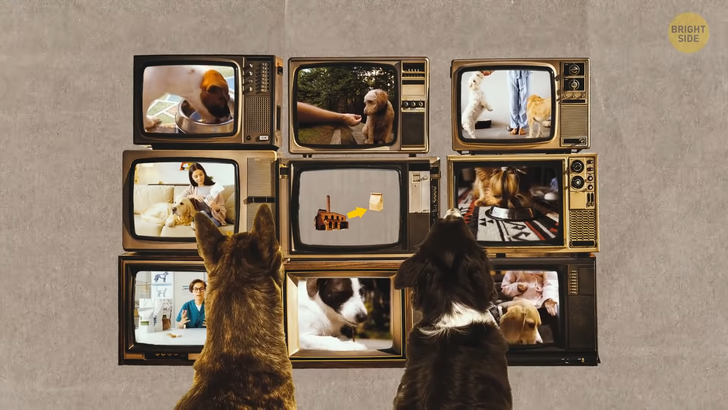
In 2012 in the UK, a company producing dog food created an unusual commercial. It was made to attract dogs’ attention. The ad used special high-frequency sounds. They were inaudible to the human ear, but dogs could hear them very well.
The idea was simple: a pooch gets so entranced by the commercial that owners can’t but notice it. And the next dog food they buy is the advertised product. In theory, the idea sounded promising. In reality, most dogs showed no reaction whatsoever. Meaning ads can’t probably manipulate pets as well as influence people.
But even though this experiment was a failure, dogs still do find watching TV interesting. You might have noticed your fluffy companion react to animals, moving objects, and other images appearing on the screen. It’s almost as if they see the same things you do! If we talk about colors, TV and reality don’t look different to dogs. They see the world in shades of yellow and blue and can’t pick out green and red hues. Plus, canine vision is somewhat blurred.
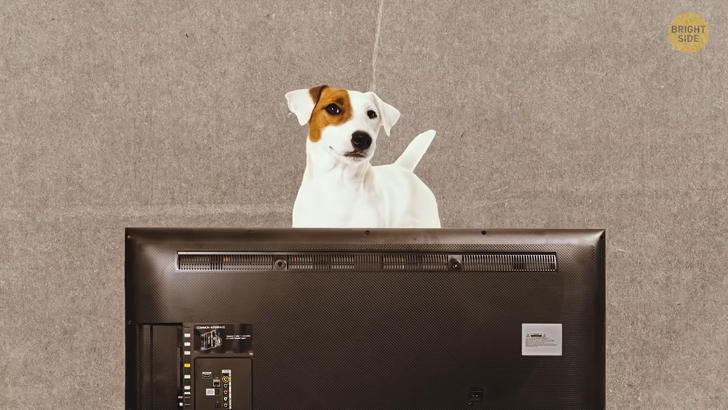
Dogs process what’s happening on the screen in a different way than you do. When you watch something, your brain needs 16 to 20 video frames per second to detect movement. For your pooch, this number must be more than 70 frames per second. Let’s say, your pet is seated in front of an old TV. In this case, what the animal sees looks like a flip book. If it’s a modern television, your pup is likely to be much more interested. Because modern TV sets have a faster video frame rate.
As for the content itself, dogs react to the same stuff that would attract their attention in real life. It can be squeaking toys, commands, and other dogs barking, growling, yipping, and whatnot. If the TV screen isn’t showing anything related to dogs, though, your pet will probably remain completely uninterested.
In a 2017 experiment, dogs were offered to watch different activities happening on three screens. The animals didn’t show any preferences for one screen over the others. In fact, they didn’t look even a tiny bit curious or eager to spend some time in front of any of the TVs. It might be because dogs have a super short TV attention span. Usually, they only look at the screen for a couple of seconds at a time.
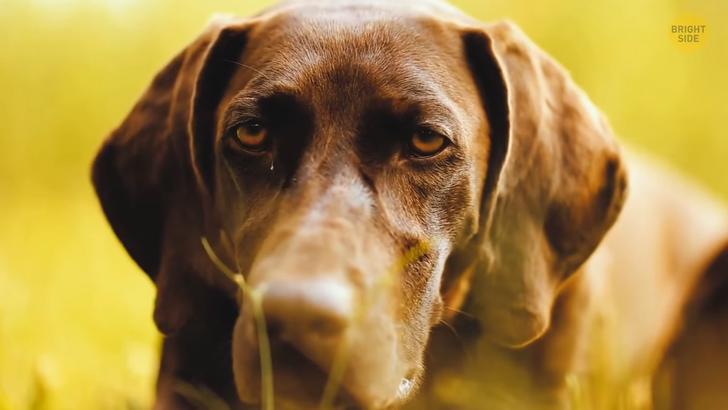
On the other hand, hunting dogs, which are innately interested in moving objects, can get more captivated. While those canines that mostly rely on smell will get bored in no time. Other pets, like cats or parrots, also seem to enjoy an occasional TV show or two. Many parrot owners are sure their birds love watching TV. They get excited when a particular commercial is on. They can even start flapping their wings, dancing, or whistling.
But what do they see on the screen? A parrot’s vision is different from yours in several ways. For one thing, its eyes are on the sides of the head, not facing forward. It helps the bird to see a larger area and protect itself from enemies. But even though parrots have a broader vision, they can’t perceive depth well enough.
It means that images on a widescreen TV look much flatter to them than they do to you. When you’re watching TV, you see one constant image. But for parrots, the screen is constantly flickering at a fast speed. And the coolest thing: these birds can see ultraviolet light. But the human eye can’t detect it.
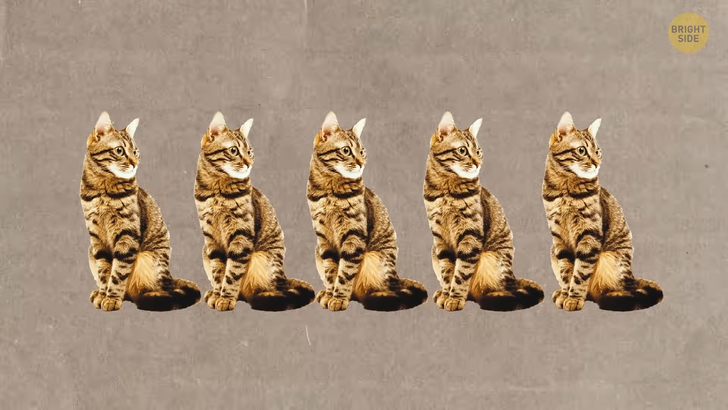
And how about cats? These animals are natural hunters. That’s why they most often react to the images of rodents and birds. In one study, more than 100 cats watched TV for 3 hours a day. The felines were split into 5 focus groups. Each group had its own program to view, which ranged from the footage of people and animals moving, to a blank screen.
The average time the cats spent watching TV was a bit more than 6%. The most popular were the shows about animals. If your cat likes staring at the screen from time to time, try not to let it alone in front of the TV. The chances are your pet’s hunting instincts will take over.
And when it pounces to catch a bird flying on the screen, your television will end up on the floor. All in all, it might be not bad that our pets have such limited screen time. But this whole TV-watching situation makes me think. How do different creatures see the world around them?
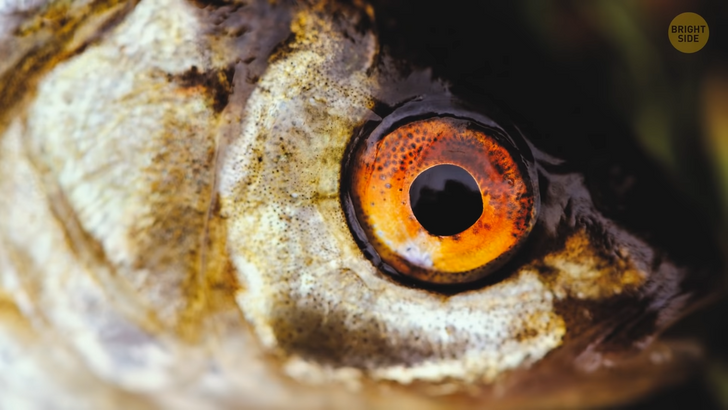
Fish’s eyes are not that different from ours. But they’re covered with a protective film. Otherwise, fish wouldn’t be able to see clearly underwater. Like in the human eye, there are rods for black and white vision and cones for color vision in the fish’s eyes. Some fish species, like tank-dwelling goldfish, can also see ultraviolet! Fish’s eyes are also designed in such a way that everything located nearby looks bigger than it really is.
Snakes have rather poor vision. That’s why they have to stick out their tongues to get an idea of what’s going on around them. On the Bright Side (heh-heh), snakes can spot thermal radiation amazingly well. All living creatures emit this kind of radiation. At night, this natural ability is ten times more effective than any modern night vision device. But during the day, snakes can only react to movement.
Rats and mice don’t have perfect vision either. It’s quite blurry, with bad depth perception. These rodents perceive colors a bit like people with red-green colorblindness. Everything looks bluish. And the colors they DO see are kinda faded. Also, rats and mice are likely to connect smells with what they see at the moment. They mostly perceive the world with the help of their whiskers, through touch.
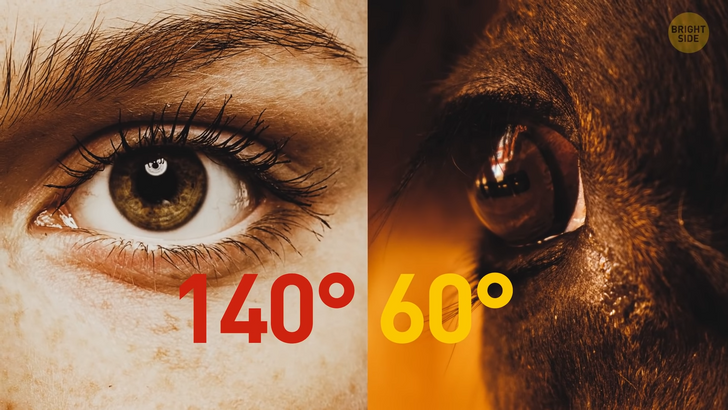
Mooove over! Cows can see the world in much less vibrant colors than most people. Only a few hues look bright, the rest are faded. These animals also don’t see things clearly enough. It’s because they can’t focus their eyes as fast as people do. Plus, cows need more time to process visual information.
They have poor depth perception because of their limited vertical vision. It’s 60 degrees vs 140 degrees in humans. You might have noticed cows stop before walking across shadows. That’s because they can’t tell whether it’s a shadow or a ditch or a hole in the ground.
Horses can see almost 360 degrees. But they have two blind spots — a small one directly in front of their noses and the other behind their tails. Horses don’t see colors as bright as we do. Their color deficiency makes it hard for them to spot some objects. They also can’t distinguish red colors. People can see more hues than bees, but bees have a broader range of color vision. You base your color combinations on blue, green, and red. And bees — on blue, green, and ultraviolet.

These insects don’t have special photoreceptors to see the red color. But they can distinguish yellow, orange, and a unique color called “bees’ purple.” That’s a mixture of yellow and ultraviolet light. Bees see color five times faster than people. Their color vision is not only the speediest in the animal world. It also helps them find natural “landing strips” invisible to people.
Flies’ eyes don’t move. But their spherical shape and the way they stick out of the bugs’ heads give flies an almost 360-degree vision. These insects can’t focus and are short-sighted. Just like some people I know. But the coolest thing about how they see the world? It resembles a mosaic — thousands of teeny images that together create the whole picture.
Flies are so jumpy for a reason. Even though these bugs don’t see well, they’re great at picking up movement. This ability helps them flee in the blink of an eye. Um, that’s flee as in “get away”, not flea as in the “bugs on your dog”. Are we clear? Good.
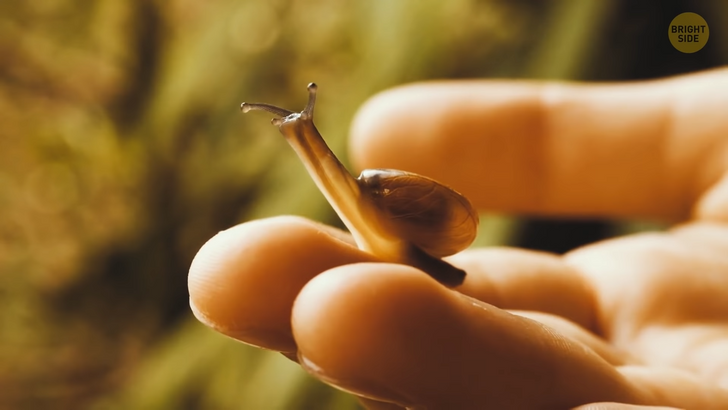
Moving on. Sharks see the world in monochrome. These creatures are a bit short-sighted. But sharks only need the sense of sight once they’re closing in on their soon-to-be dinner. And in dim light, a shark can see almost 10 times better than you do.
Garden snails’ eyes don’t focus or see colors. But these slow creatures can make out other living beings coming close. Snails also know how to navigate toward dark, safe places. All thanks to their ability to analyze the difference in light intensity. Adult giant clams don’t move. They attach themselves to a rock or coral and watch the world through hundreds of tiny pinhole eyes. Those are situated along the edges of their soft bodies.
Clams can distinguish three different colors. But unfortunately, they can’t combine the information they receive. That’s why they see bright and colorful but totally shapeless images. But that’s no slam on the clam. And, they’re also delicious.











